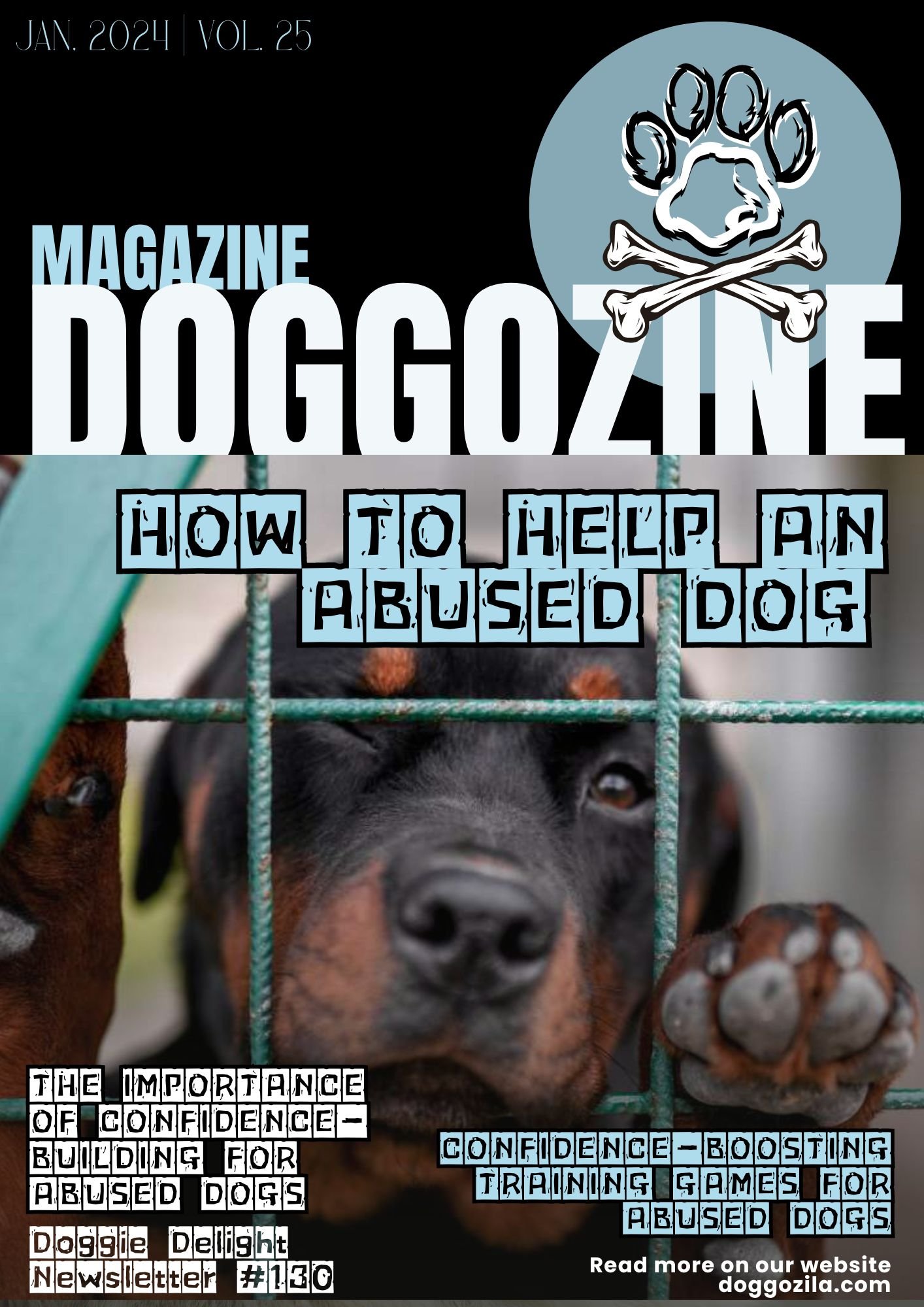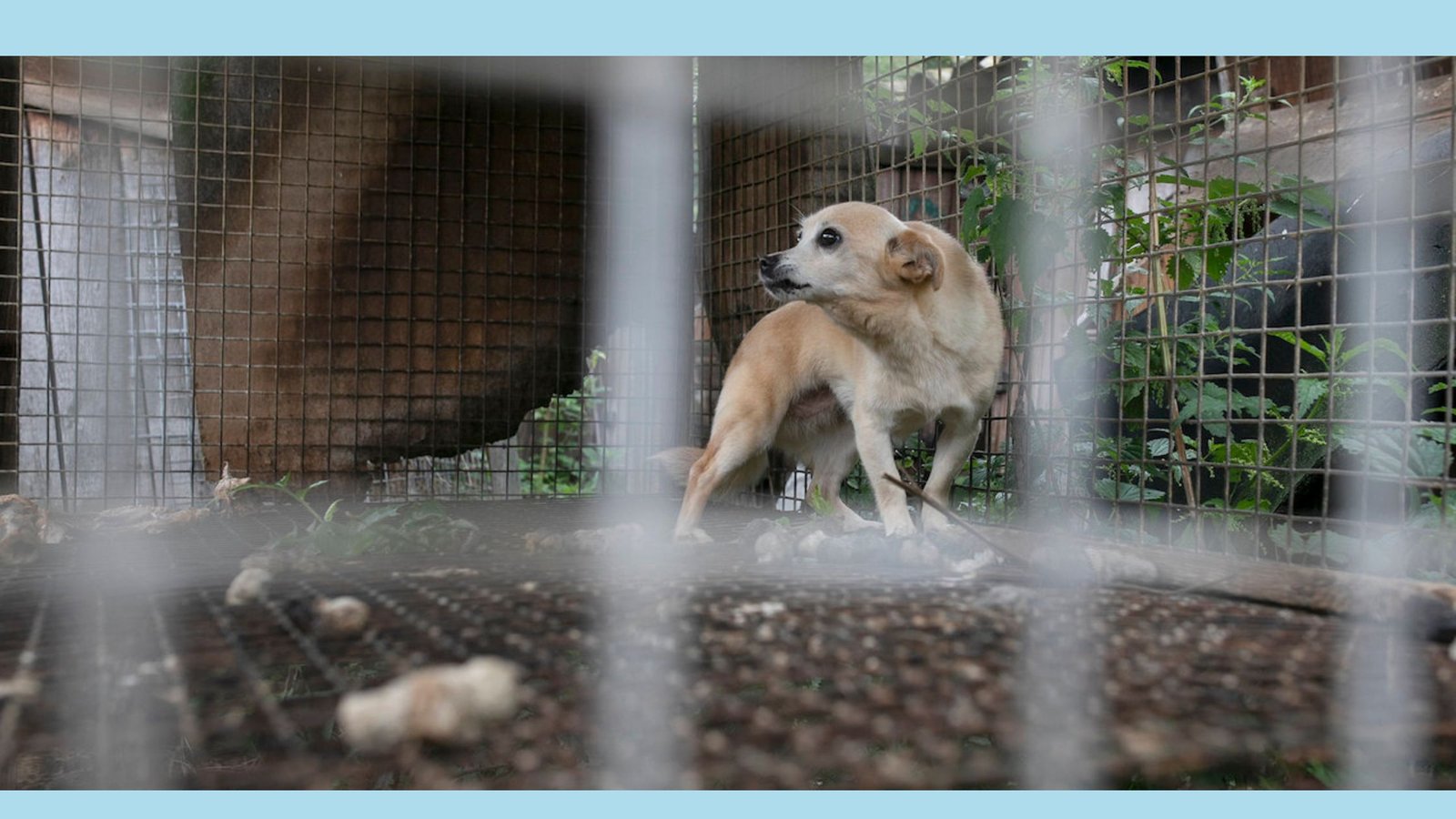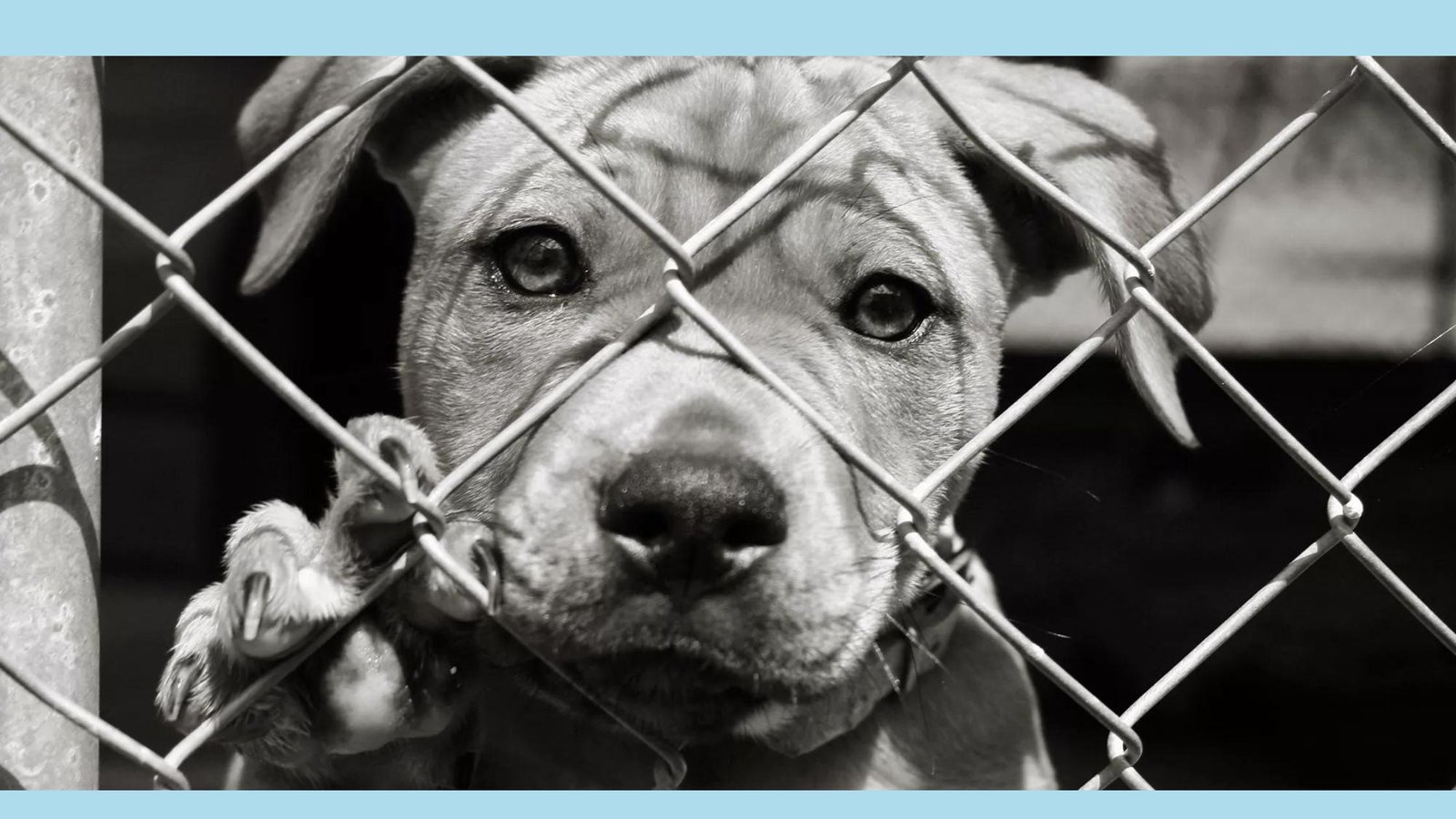
RESPECTING BOUNDARIES AND PROVIDING A NURTURING ENVIRONMENT
Abused dogs often carry the scars of their past, both physically and emotionally. These dogs have endured trauma and mistreatment, which can have a lasting impact on their behavior and overall well-being. Here is how to help an abused dog!
As responsible pet owners and animal lovers, it is our duty to provide these dogs with the care, patience, and understanding they need to heal and thrive.
The Importance of Respecting Boundaries to Help an Abused Dog
When working with abused dogs, it is crucial to respect their boundaries. These dogs have likely experienced a lack of control and have had their personal space violated in the past. By respecting their boundaries, we can help rebuild their trust and create a safe environment for them to heal.
Respecting boundaries means allowing the dog to approach and interact with you on their terms. Avoid forcing physical contact or overwhelming them with attention. Instead, let the dog take the lead and gradually build a bond based on trust and mutual respect.
It’s important to remember that every dog is an individual, and their comfort levels may vary. Some dogs may take longer to trust and feel comfortable, while others may be more open to forming connections. Patience is key when working with abused dogs, as they may need time to adjust to their new surroundings and learn to trust again.

CREATING A NURTURING ENVIRONMENT TO HELP AN ABUSED DOG
Helping abused dogs heal is important. You need to create a safe and calm environment.
Here are some key things to consider:
Safety and Security
Abused dogs feel afraid and anxious due to their past experiences. Make your home a safe, secure space for them. Remove anything dangerous. Give them a quiet area to retreat to when needed. Use baby gates or crates to create a cozy, safe spot.
Provide soft bedding and toys to help them feel comfortable and secure. This helps the dog relax and not feel overwhelmed.
Consistency and Routine
Abused dogs do best with a consistent routine. Set regular times for feeding, exercise, and rest. Stick to a predictable schedule to help the dog feel secure and less anxious. Be consistent with training and behavior expectations too. Use positive reinforcement like treats or praise when the dog behaves well. Avoid punishing the dog, as this can further traumatize them and break their trust.
Socialization and Exposure
Introduce new people, animals, and environments gradually. Go at the dog’s pace. Start with small, controlled interactions. Slowly increase exposure as the dog becomes more comfortable. Watch for signs of stress or anxiety. Give positive reinforcement when the dog stays calm and relaxed.
Patience and Understanding
Patience is key when working with abused dogs. Understand that progress may be slow, and setbacks are common. Avoid rushing the dog’s healing process and allow them to set the pace.
Be understanding of their triggers and fears. If the dog shows signs of discomfort or fear, back off and give them space. Over time, with consistent love and care, they will begin to trust and open up.

OVERCOMING PAST TRAUMA WILL HELP AN ABUSED DOG
With time and love, abused dogs can overcome their past and learn to trust again.
Here are some additional tips to help them on their journey to recovery:
Seek Professional Help for Any Abused Dog
If you have adopted an abused dog or are considering doing so, it can be beneficial to seek professional help. A qualified dog trainer or behaviorist can provide guidance and support tailored to your dog’s specific needs.
They can help you create a personalized training plan, address any behavioral issues, and provide valuable insights into your dog’s progress and well-being.
Provide Mental Stimulation
Abused dogs may have limited exposure to mental stimulation in their past. Engage them in activities that challenge their minds, such as puzzle toys, scent games, and obedience training.
These activities not only provide mental stimulation but also help build confidence and strengthen the bond between you and your dog.
Practice Positive Reinforcement
Positive reinforcement is a powerful tool when working with abused dogs. Rewarding desired behaviors with treats, praise, and affection helps build trust and encourages the dog to repeat those behaviors.
Don’t use punishment when training dogs that were abused. It can make them afraid and anxious. This undoes the progress they made on their healing journey.
Be a Source of Unconditional Love
Abused dogs need time to learn that not all humans will hurt them. Show them unconditional love and patience. Make them feel safe, loved, and valued.
Building a strong bond based on trust and love is crucial for their healing. Be there for them, provide comfort, and celebrate their progress, no matter how small.
Each Dog Is Unique
Helping abused dogs thrive requires respecting their boundaries and providing a nurturing environment. By understanding their past trauma, and being patient and consistent in our approach, we can help these dogs heal, trust, and ultimately thrive in a safe and loving home.
Remember, each dog is unique. Their healing journey may take time. But with our dedication and commitment, we can make a difference in their lives and give them a second chance.

THE IMPORTANCE OF CONFIDENCE-BUILDING TO HELP AN ABUSED DOG
Confidence-building plays a vital role in rehabilitating abused dogs. When a dog has experienced trauma or abuse, their confidence is often shattered. This leads to behavioral issues like fear or aggression, making it difficult for them to trust humans or animals.
Building confidence in these dogs is essential to help them overcome their past and live a happy, fulfilling life. See how confidence could help an abused dog!
Know The Effects of Abused Dog In Order to help
Dogs who have faced abuse often experience physical and emotional pain. This causes them to develop deep fears and anxieties. They may have been neglected, abandoned, or even hurt physically. Such traumatic experiences can negatively impact a dog’s behavior and overall well-being for a long time.
One common issue is a lack of trust in humans. Abused dogs may see all humans as threats and act defensively or aggressively when approached. Their fear and mistrust make it hard for them to form new relationships and adjust to new environments.
Additionally, abused dogs may struggle with low self-esteem and lack confidence. They may constantly feel on edge and unsure about themselves and their surroundings. This lack of confidence can manifest as excessive barking, destructive behavior, or submissive urination.
The Role of Confidence-Building
Building confidence is crucial to help an abused dog recover from past traumas. By gradually increasing their confidence levels, these dogs can learn to trust again and feel more secure in their environment.
One effective way to build confidence is through positive reinforcement training. This training method rewards desired behaviors. It creates a positive link between certain actions or situations. By rewarding confident behavior, like approaching new people or calmly exploring new areas, dogs learn these actions are safe and rewarding.
It is important to give a dog a routine and clear rules. This helps dogs that were abused feel safe and in control. Having the same things happen every day makes them feel stable and confident.
Dogs that were abused also need to meet new people and go to new places slowly. This teaches them that new situations are not always scary. A trainer can help the dog have good experiences in new places. This helps the dog trust unfamiliar things.
Benefits of Confidence-Building
Building confidence it’s important to help an abused dog feel better. Dogs that feel confident can handle stress better. They are less likely to act scared or aggressive. This makes them safer to be around people and other animals.
When dogs feel confident, they can try new fun activities. They can do things like agility courses, obedience contests, or be therapy dogs. These activities are good for their body and mind. They also help dogs make friends with people and other animals.
Building trust in abused dogs can help them find loving homes. Many people worry about getting a dog with issues like fear or aggression. But when a dog shows progress in gaining confidence, their chances of finding an understanding family increase.
Patience, Care, and Dedication
To help an abused dog feel confident is key to recovery. By gaining confidence, they can heal from past trauma and live happier lives. With positive training, safe spaces, and controlled social time, abused dogs can slowly learn to trust and feel secure. Boosting confidence also improves their chances of joining a forever family. With patience, understanding, and commitment to their well-being, we can greatly impact abused dogs’ lives.

CONFIDENCE GAMES WILL HELP ANY ABUSED DOG
Abused dogs often lack trust and confidence. They may have experienced trauma that makes it hard to feel safe with humans. Building their confidence is crucial for a happy, fulfilling life.
One effective way to boost confidence is through training games that engage their minds and help them develop trust and positive associations with humans. This article further explores confidence-boosting training games that can benefit abused dogs. See how confidence could help transform an abused dog!
Hide and Seek and Puzzle Toys
Playing “hide and seek” is a fun game for dogs. It helps build trust and confidence in dogs that have been mistreated. First, have your dog sit and stay. Next, go hide in another room or behind some furniture. Once you’re hidden, call your dog’s name in an excited, happy voice. When your dog finds you, praise them and give them treats.
This game teaches them to trust that you’ll come back. It also encourages them to use their senses to find you. Puzzle toys are a great way to keep your dog’s mind engaged and build their confidence. Puzzle toys challenge your dog’s problem-solving skills and provide mental stimulation. Put treats or their favorite food inside the puzzle toy.
Let them figure out how to get the reward. As they solve the puzzle, they gain a sense of achievement and boost their confidence. Start with easy puzzles. Over time, make them more difficult as your dog gets more confident.
Agility Training and Clicker Training
Agility training keeps your dog physically active. It also helps build their confidence. Set up an agility course in your backyard or a safe area. Include obstacles like tunnels, jumps, and weave poles. Always begin with simple obstacles. Over time, make them more difficult as your dog gets more comfortable.
Use positive reinforcement and rewards to motivate them to complete the course. This game helps abused dogs develop trust in their abilities. It builds their confidence in navigating new, challenging situations. Learning to use a clicker is a good way to build your dog’s trust. First, make a clicking sound and give your dog a treat. Do this many times until your dog knows the click means a tasty reward is coming.
After that, you can click when your dog does something good. This will help your dog understand that good actions lead to rewards. Dogs that have been mistreated can learn that their choices matter. Using a clicker boosts their confidence and shows them they can earn praise.
Nose Work and Obedience Training
Nose work games let your dog use their natural smelling ability. Hide treats or toys around your home or yard. Have your dog sniff them out. At first, make hiding spots easy. As they improve, make it harder. This fun activity exercises your dog’s brain.
More importantly, it helps a mistreated dog trust their instincts and abilities again. Teaching obedience commands builds trust between you and your dog. Start with basics like sit, stay, and come. As your dog masters these, move to harder commands.
Use treats to reward your dog when they obey. This training shows dogs that following instructions leads to praise. For an abused dog, learning commands boosts confidence. They see that good behavior pays off.
Socialization Activities
Dogs who were mistreated may not have interacted much with others. This can make them unsure about new situations. Doing socialization activities helps them trust other dogs and people. Take your dog to parks or meet other friendly dogs. Slowly introduce them to new places, people, and things in a positive way. This helps them feel less afraid and more confident in social settings.
A Quick Overview On How To Help An Abused Dog
Building trust in dogs who were mistreated takes time and care. Training games boost their confidence by exercising their minds, forming bonds, and making good associations with humans.
Always be calm and patient during these games. Never force your dog if they feel uneasy.
With practice and consistency, you can help your abused dog regain their trust, become more confident, and live a happy life. We hope this guide shows you how to help an abused dog!










